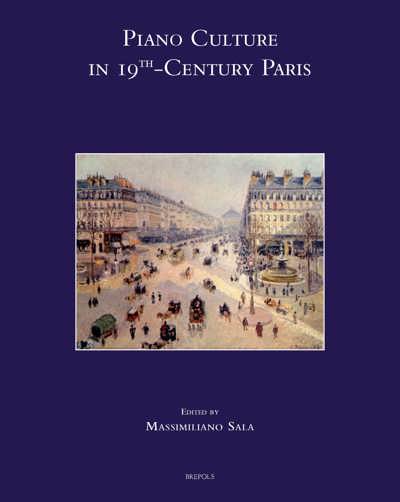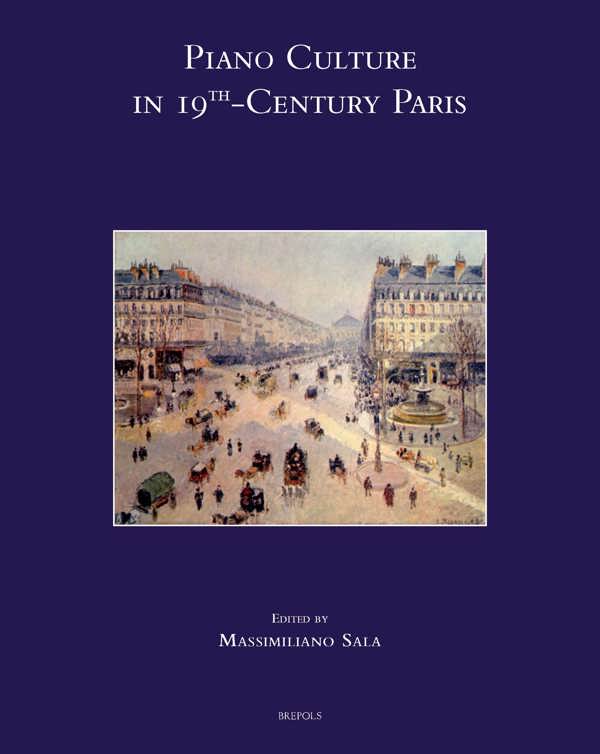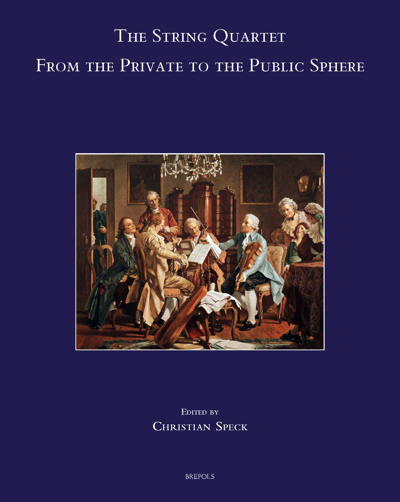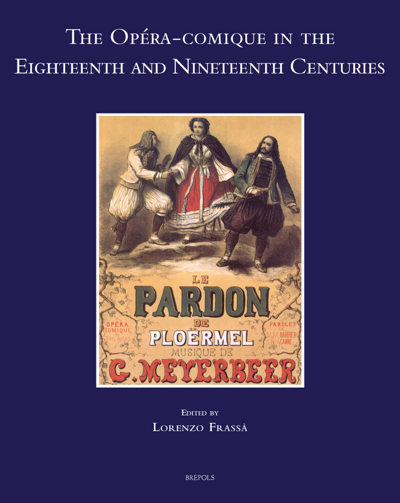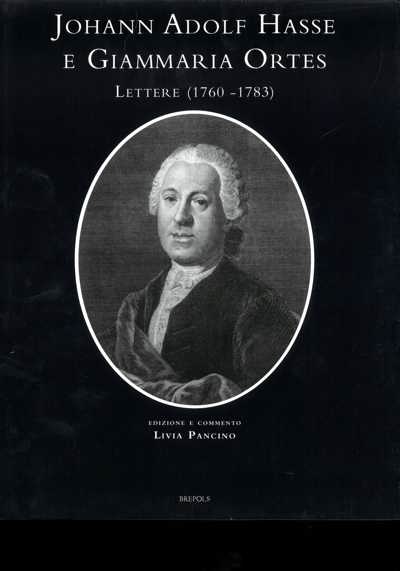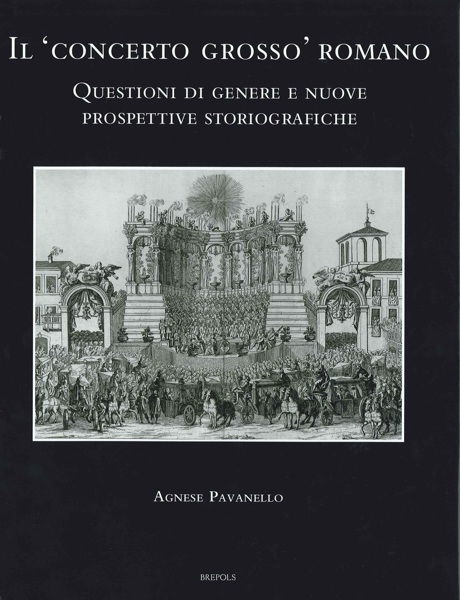
Piano Culture in 19th-Century Paris
Massimiliano Sala (ed)
- Pages: 413 p.
- Size:210 x 270 mm
- Illustrations:83 b/w
- Language(s):English, French, Italian
- Publication Year:2015
- € 130,00 EXCL. VAT RETAIL PRICE
- ISBN: 978-2-503-55326-9
- Hardback
- Available
"Maar deze bedenkingen nemen niet weg dat de artikels van een hoog niveau zijn en duidelijk het resultaat zijn van een gedreven onderzoek. Dit boek reveleert dan ook veel nieuwe informatie en inzichten over verschillende aspecten van de internationale pianocultuur (compositie, concertpraktijk, receptie, pianobouw, uitgeverijen...) tijdens een periode van de negentiende eeuw. Naast de inhoudelijke kwaliteit werd er ook veel zorg besteed aan de boekverzorging en opmaak, kenmerkend voor de serie Speculum musicae, (...)" (Jan Dewilde, in: Forum+ voor Onderzoek en Kunsten 23, 2, 2016, p. 53-55)
“From the Speculum Musicae series, published through the Centro Studi Opera Omnia Luigi Boccherini, comes an ambitious and handsomely-produced volume of diverse contributions on a major facet of nineteenth-century musical life. (...) Those familiar with the Speculum Musicae series will recognize the attractive presentation of text, musical examples and reference tables, as well as the sturdy construction of the volume.” (Heather de Savage, in Nineteenth-Century Music Review, 30 October 2018, p. 278-281)
The volume aims to investigate the world of the piano in France, and the evolution of the instrument between the ancien régime and the Restoration. Particular attention will be devoted to the circulation of central European pianists at the turn of the nineteenth century, their influence on the development of piano culture and technique and the impact this had on French musical tastes. Nineteen contributions will explore the piano industry, aspects of performance practice and the bravura tradition, and will investigate certain lines of interaction between publishers, composers, institutions and concert venues between the French Revolution and the first Industrial Revolution. The ultimate aim will be to determine more comprehensively the role of piano culture within nineteenth-century Parisian musical life.
Preface
Overview
Leon Plantinga, Paris after Napoleon: Hub for Europe’s Pianists
Publishing and the Piano Industry
David Rowland, Pianists and the European Music Trade c1790-1820 – Henri Vanhulst, Le concerto pour piano dans les catalogues des éditeurs parisiens et lyonnais jusqu’aux environs de 1820 – Cécile Reynaud, Les éditeurs français de Carl Czerny. Essai de chronologie des éditions des oeuvres de Czerny en France (1825-1830) – Herbert Seifert, Musical and Biographical Information in Some Letters from and to the Composer and Publisher Ignaz Pleyel – Pierre Goy, Le développement du jeu «moderne» du piano entre 1820 et 1830: Les changements dans la facture instrumentale et le développement de nouveaux moyens pianistique
Central European Composers and the Development of Piano Virtuosity
Alban Ramaut, Antoine Reicha et le concept de virtuosité: approche étymologique d’un mot à la frontière de deux siècles – Alicia C. Levin, «A Musician of the First Order»: Frédéric Kalkbrenner’s Virtuoso Strategies for Paris – Rohan H. Stewart-MacDonald, The Second Solo in the Opening Movements of Early-Romantic Parisian Piano Concertos: Frédéric Kalkbrenner (1785-1849) and His Contemporaries – Christian Ahrens, A Real Symphonie Concertante in Pleyel’s Manner: Johann Nepomuk Hummel’s (Double) Concerto for Piano and Violin Op. 17
Jan Ladislav Dussek
Michaela Freemanová, Jan Ladislav Dussek and His First Biographers – Frédéric de La Grandville, Dussek’s Reception as a Musician at the Paris Music Conservatoire, 1807-1812 – Richard Fuller, A Musical 'Wertheriade' (?) The Particular and Unique Character of Dussek’s Piano Concerto in G minor, Op. 49/50
Performing Style and Didatics
Stephanie Frakes, 'Cantabile' in French Methods for Piano 1797-1840 – J. Mackenzie Pierce, 'Ersatz Improvisation': Chopin’s Opus 28 and the Published Prelude Collection – Fiorella Sassanelli, Scelte musicali e repertori degli allievi pianisti del Conservatoire di Parigi: gli exercices des élèves (1800-1824) e il 'morceau de lecture à vue' del 1829
Reception of Piano Music and Virtuosos
Shaena B. Weitz, 'Le Pianiste' and Its History of Pianism in Paris: «The Corneilles and Racines of piano are not 'perruques'!» – Majella Boland, Contrasts in John Field Reception: The Parisian ‘Images’ – Yael Bitrán, Henri Herz and His Mexican Biography: A Response from a Virtuoso
Biographies – Index of Names
